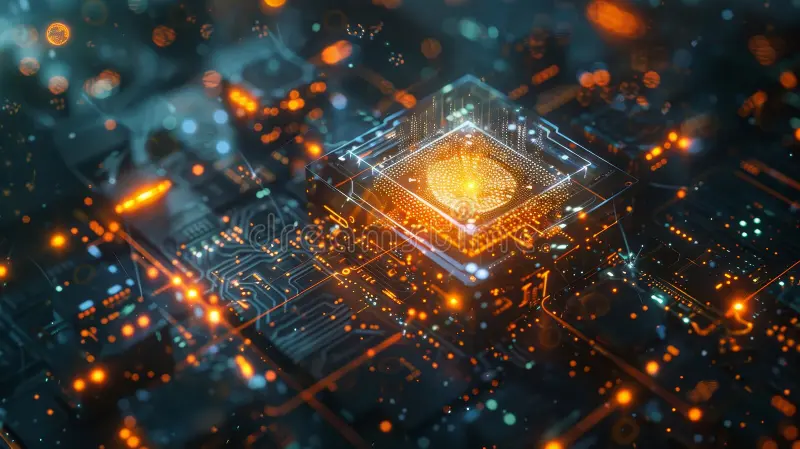As we stand firmly in the mid-2020s, technology continues to evolve at a breathtaking pace. The innovations emerging today promise to transform the very fabric of our daily lives, reshaping how we work, communicate, and interact with the world around us. At DailyReport, we are excited to explore three of the most groundbreaking technological advances that are already making waves in 2025—and why they matter to you.
Introduction
Technology has always been a powerful force for change, but the innovations unfolding now are unlike anything we’ve seen before. From artificial intelligence enhancing our decision-making processes to quantum computing solving problems once thought impossible, these breakthroughs are opening doors to new possibilities. In this article, we’ll deep dive into:
- Artificial Intelligence and Augmented Reality in Everyday Life
- Quantum Computing’s Practical Applications
- Next-Generation Renewable Energy Technologies
Each section includes an in-depth look at the technology, real-world applications, and its potential impact on society, economy, and environment.
1. Artificial Intelligence and Augmented Reality in Everyday Life
The Rise of AI and AR Integration
Artificial Intelligence (AI) and Augmented Reality (AR) have long been discussed as separate innovations, but the fusion of these technologies is now powering some of the most transformative applications. In 2025, AI-powered AR devices are becoming mainstream tools—not just for gaming or entertainment but for work, education, healthcare, and social interaction.
Real-World Applications
- Workplace Productivity: AR glasses, enhanced with AI, overlay digital information onto the physical environment, enabling remote collaboration with lifelike holograms. Imagine engineers troubleshooting equipment in real-time with virtual experts guiding them from thousands of miles away.
- Education: Classrooms are being revolutionized by AI-driven AR content that adapts to each student’s learning style. Students can explore 3D models of ancient ruins or molecular structures interactively, boosting engagement and understanding.
- Healthcare: Surgeons use AR headsets combined with AI analytics to visualize patient anatomy during complex procedures, improving precision and outcomes.

Impact on Daily Life
- Enhanced Efficiency: AI and AR reduce errors and accelerate decision-making.
- New Social Experiences: Virtual gatherings with realistic avatars blend seamlessly with physical reality, breaking down geographic barriers.
- Accessibility: These technologies offer new solutions for people with disabilities, including AI-driven sign language interpretation and AR navigation aids.
Challenges and Considerations
With increased reliance on AI and AR, privacy concerns and digital equity are front and center. Ensuring secure data handling and affordable access will be key to widespread adoption.
2. Quantum Computing’s Practical Applications
What Is Quantum Computing?
Quantum computing harnesses the principles of quantum mechanics to process information in fundamentally new ways, offering exponentially greater power than traditional computers. While the technology has been in development for decades, 2025 marks a turning point with practical applications beginning to emerge.
Real-World Applications
- Drug Discovery: Pharmaceutical companies use quantum simulations to model complex molecules, accelerating the creation of new medicines with fewer side effects.
- Cryptography: Quantum computers challenge current encryption standards but also enable ultra-secure communication methods impossible to hack.
- Financial Modeling: Banks and investment firms leverage quantum algorithms to better predict market trends and optimize portfolios.

Impact on Daily Life
Though quantum computers themselves may not be household devices soon, their influence will be felt indirectly through:
- Better Healthcare: Faster drug development means treatments for chronic and rare diseases arrive sooner.
- Improved Cybersecurity: Quantum encryption could protect your personal data and financial transactions against cyberattacks.
- Economic Growth: Enhanced financial modeling supports stronger economies with less volatility.
Challenges and Considerations
Quantum computing faces technical hurdles, such as maintaining qubit stability and error correction. There are also ethical questions around data security and equitable access.
3. Next-Generation Renewable Energy Technologies
Innovations Beyond Solar and Wind
Renewable energy technologies have rapidly evolved, but in 2025, the landscape is being reshaped by cutting-edge solutions that promise greater efficiency and lower environmental impact.
Real-World Applications
- Perovskite Solar Cells: These new solar materials offer higher efficiency and flexibility compared to traditional silicon cells, enabling integration into windows, clothing, and portable devices.
- Green Hydrogen: Produced by splitting water using renewable electricity, green hydrogen is emerging as a clean fuel for industries and transportation that are hard to electrify.
- Energy Storage Breakthroughs: Advanced battery technologies, including solid-state batteries, allow longer-lasting, safer, and faster-charging energy storage critical for renewable adoption.

Impact on Daily Life
- Energy Independence: Homeowners can generate and store their own clean energy, reducing utility bills and carbon footprints.
- Sustainable Transportation: Hydrogen-powered vehicles and improved batteries accelerate the shift away from fossil fuels.
- Climate Change Mitigation: Faster adoption of these technologies is crucial to meeting global emissions targets.
Challenges and Considerations
Scaling production, raw material sourcing, and infrastructure development remain challenges. Collaboration between governments, industry, and communities is vital.
The Intersection: How These Innovations Work Together
While each of these technologies is powerful alone, their combined effects could be revolutionary. For instance:
- AI can optimize energy consumption in smart grids powered by renewable sources.
- Quantum computing could enhance AI’s machine learning capabilities.
- AR tools powered by AI could help technicians maintain renewable energy infrastructure more efficiently.
This convergence will drive a future where technology adapts fluidly to human needs and environmental constraints.

Societal and Ethical Implications
The integration of these technologies into daily life raises important ethical questions:
- Privacy and Security: As AI and quantum computing evolve, protecting individual data rights is paramount.
- Job Market Changes: Automation may disrupt traditional jobs but also create new opportunities in tech sectors.
- Digital Divide: Ensuring equitable access prevents widening social inequalities.
Public policies and responsible innovation must keep pace to ensure technology benefits all.

Looking Ahead: What to Expect in the Next Five Years
By 2030, we can expect:
- Wider adoption of AI-AR interfaces in homes and workplaces.
- Quantum computing embedded within critical industries, powering solutions we can barely imagine today.
- Renewables becoming the dominant energy source worldwide, supported by new materials and storage methods.
The trajectory is clear: technology will become more personalized, intelligent, and sustainable.

Conclusion
The future is here. Artificial Intelligence combined with Augmented Reality, practical quantum computing, and next-generation renewable energy technologies are not just futuristic concepts—they are shaping life in 2025 and beyond. At DailyReport, we believe staying informed about these breakthroughs is essential to understanding the world around us and preparing for the opportunities and challenges ahead.
Stay tuned for more updates as we continue to track the innovations driving the future of daily life.

